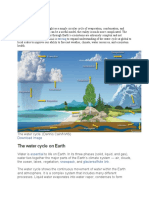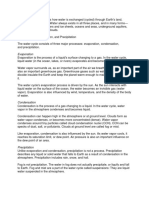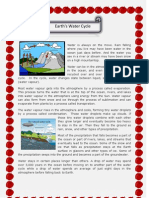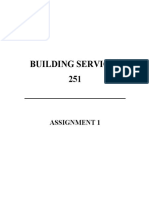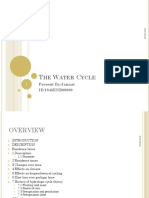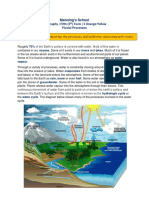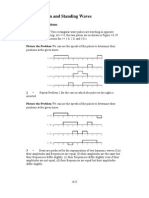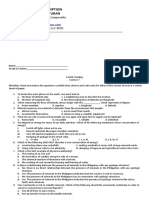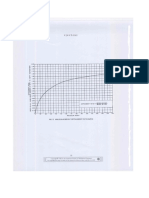0% found this document useful (0 votes)
75 views5 pagesWater Cycle and State Changes
The document summarizes the water cycle, which describes the continuous movement of water on, above, and below the Earth's surface. Water changes states between liquid, gas, and solid as it moves through the cycle, but the total amount of water remains constant. The stages of the water cycle are evaporation, where water evaporates from bodies of water and transpiration occurs through plants; condensation, where water vapor condenses to form clouds; precipitation, where water falls as rain, snow, or hail; infiltration, where rainwater gets absorbed into the ground; and runoff, where water flows downhill into rivers, lakes, and oceans to complete the cycle.
Uploaded by
tanishkasadhuCopyright
© © All Rights Reserved
We take content rights seriously. If you suspect this is your content, claim it here.
Available Formats
Download as PDF, TXT or read online on Scribd
0% found this document useful (0 votes)
75 views5 pagesWater Cycle and State Changes
The document summarizes the water cycle, which describes the continuous movement of water on, above, and below the Earth's surface. Water changes states between liquid, gas, and solid as it moves through the cycle, but the total amount of water remains constant. The stages of the water cycle are evaporation, where water evaporates from bodies of water and transpiration occurs through plants; condensation, where water vapor condenses to form clouds; precipitation, where water falls as rain, snow, or hail; infiltration, where rainwater gets absorbed into the ground; and runoff, where water flows downhill into rivers, lakes, and oceans to complete the cycle.
Uploaded by
tanishkasadhuCopyright
© © All Rights Reserved
We take content rights seriously. If you suspect this is your content, claim it here.
Available Formats
Download as PDF, TXT or read online on Scribd
/ 5









